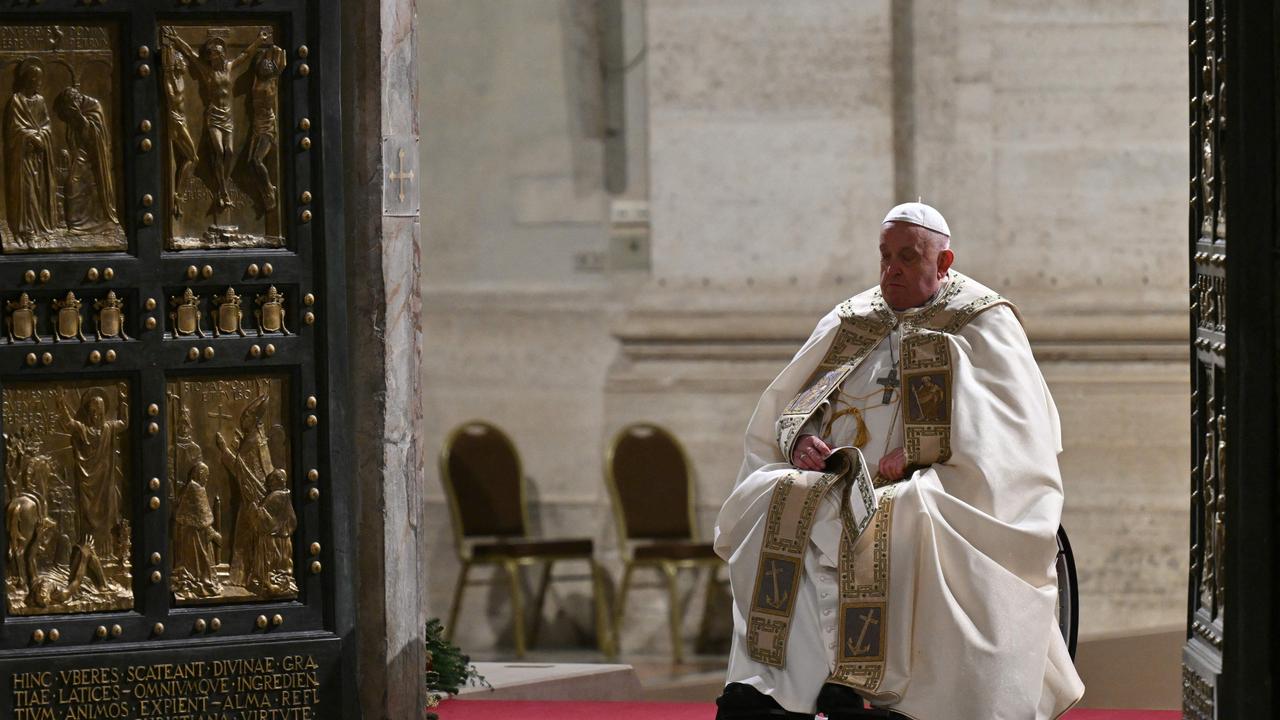Pope Francis marked a momentous occasion in Catholic history by opening the Holy Door of St Peter’s Basilica on Christmas Eve, inaugurating a year-long Jubilee celebration expected to draw over 30 million pilgrims to Rome. The 88-year-old pontiff, though recently battling a cold, performed the ancient ritual from his wheelchair, knocking on the ornate bronze door before it swung open to the resonant pealing of Vatican bells.
The symbolic opening of the Holy Door, normally sealed with brick, marks the beginning of a profound spiritual journey for Catholic faithful worldwide. Throughout the coming year, pilgrims passing through this sacred threshold will seek plenary indulgence, a traditional form of spiritual cleansing in Catholic doctrine. The ceremony drew prominent attendees, including Italian Prime Minister Giorgia Meloni and numerous cardinals, while thousands gathered in St Peter’s Square watched the historic moment on large screens.
Rome has undergone extensive preparations for this significant religious event, with major restoration projects transforming the Eternal City. Iconic landmarks like the Trevi Fountain and Ponte Sant’Angelo have received careful cleaning, while infrastructure improvements include a newly completed road tunnel at Piazza Pia. These renovations, finished just days before the ceremony, represent what Prime Minister Meloni described as a “little civil miracle.”
Security measures have been heightened for the Jubilee celebrations, with 700 officers deployed around Rome and the Vatican. These precautions were further intensified following recent security incidents in Europe, particularly the car-ramming attack at a German Christmas market. The city’s preparedness extends beyond security to addressing practical concerns about accommodating the massive influx of visitors expected throughout 2025.
Under the motto “Pilgrims of Hope,” this Jubilee year represents a striking blend of ancient tradition and modern innovation. While maintaining its centuries-old spiritual significance, the Vatican has embraced contemporary technology, offering pilgrims online registration systems and multilingual mobile applications to navigate the year’s events. Even the introduction of Luce, a Japanese anime-inspired mascot, signals the Church’s efforts to connect with younger generations.
The Jubilee’s inclusive approach reflects Pope Francis’s vision of a more open Church. Among the registered groups is the Italian LGBTQ organization La Tenda di Gionata, exemplifying the pontiff’s emphasis on universal welcome. The celebration will feature diverse gatherings throughout 2025, bringing together representatives from sports, business, arts, and various social groups.
Pope Francis’s leadership during this Jubilee takes place against the backdrop of global conflicts, particularly in the Middle East. His recent criticism of military actions in Gaza demonstrates his continued engagement with contemporary issues, even as he leads one of the Church’s most traditional celebrations.
The celebration’s scope is unprecedented, with Holy Doors being opened not only in Rome’s major basilicas but in Catholic churches worldwide. In a particularly meaningful gesture, Pope Francis will open a Holy Door at Rome’s Rebibbia prison, demonstrating the Church’s commitment to reaching marginalized communities.
This Jubilee, occurring every 25 years since 1300, stands as a testament to the Catholic Church’s ability to maintain historical continuity while adapting to contemporary needs. The next regular Jubilee will coincide with the 2000th anniversary of Christ’s crucifixion in 2033, adding special significance to this current celebration.
As the Vatican balances tradition with innovation, the 2025 Jubilee promises to be a unique moment in religious history, bringing together spiritual heritage and modern practice in a celebration that reaches far beyond the Catholic community to embrace broader themes of hope, renewal, and universal brotherhood.




